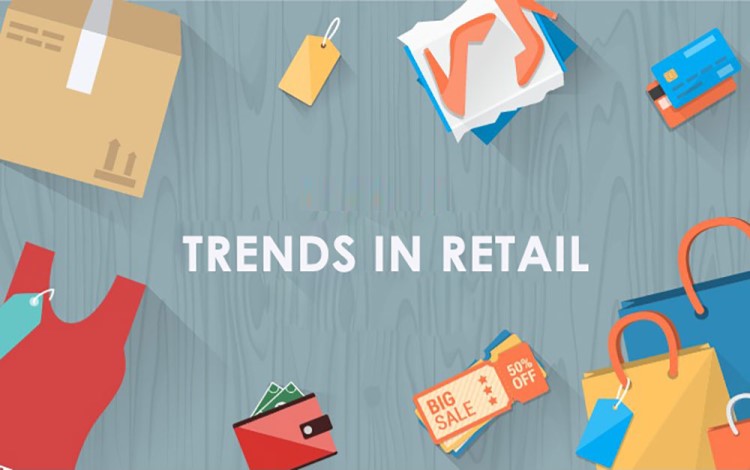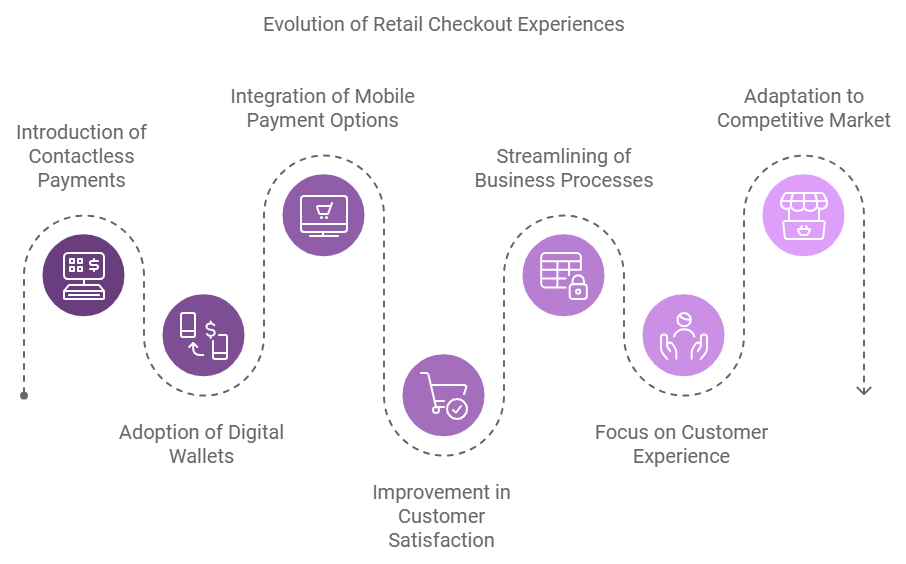
Rise of Omnichannel Shopping Experiences
Omnichannel shopping experiences have become central to modern retail. Customers expect seamless interactions across online and physical stores. As a result, retailers increasingly blend digital and in-person options to keep pace with these trends in the retail industry. You now find it easier to browse products online, check availability in-store, or use curbside pickup as part of a single, unified experience. This approach not only improves convenience but also builds customer loyalty by offering multiple ways to engage with the brand.
To make omnichannel shopping effective, retailers integrate inventory systems so customers receive real-time product information. This transparency enables you to make informed decisions, knowing that what you see online will be ready for you in-store. Many retailers also use digital loyalty programs and apps that work across all channels, making it simple to earn and redeem rewards. Additionally, flexible return policies, allowing returns across channels, are becoming standard to further streamline the customer experience.
Omnichannel experiences, a key part of trends in the retail industry, also support retailers in meeting new consumer demands. Brands that merge online convenience with in-store personalization often see increased satisfaction and sales.
Personalization and Data-Driven Marketing
Personalization has become a major focus within trends in the retail industry. Retailers now leverage customer data to offer tailored recommendations that enhance shopping experiences. By analyzing purchase history, browsing behavior, and customer preferences, retailers can provide relevant product suggestions, improving both convenience and engagement. When you shop online or receive personalized emails, these interactions are often guided by algorithms that align with your unique preferences.
Data-driven marketing also allows retailers to send more targeted promotions. For instance, retailers might offer discounts on items similar to what you previously bought or viewed. This targeted approach not only boosts sales but also fosters customer loyalty, as shoppers feel understood by the brand. Personalized shopping experiences are particularly beneficial in e-commerce, where product overload can overwhelm customers. Relevant recommendations help cut through the noise, leading to quicker and more satisfying shopping experiences.
As these personalization techniques evolve, trends in the retail industry increasingly focus on data privacy and ethical data use. Customers expect retailers to protect their data while delivering these tailored experiences. Many brands now highlight their commitment to secure data handling, aiming to strengthen customer trust. By responsibly leveraging data to enhance personalization, retailers can drive satisfaction while respecting privacy.
The Shift to Contactless Payments and Cashless Transactions
Contactless payments and cashless transactions are reshaping checkout experiences in the retail world. Digital wallets, mobile payments, and other contactless technology have become increasingly popular among consumers, reducing the need for cash and even traditional credit card swipes. With these methods, customers tap their mobile devices or cards, making the payment process faster and more convenient. This shift enhances the shopping experience, as it minimizes time spent in checkout lines and increases transaction speed.
One of the most notable trends in the retail industry is the rising adoption of mobile payment options, such as Apple Pay, Google Wallet, and Samsung Pay. These digital wallets allow customers to link their bank accounts or credit cards securely to their mobile devices, making payments with a simple tap. For businesses, offering contactless payment options can improve customer satisfaction by meeting growing demand for safe and flexible payment choices. As customers increasingly seek seamless experiences, integrating these technologies can enhance engagement and loyalty.
Additionally, cashless transactions streamline back-end processes for businesses. Without handling cash, retailers experience fewer errors in cash reconciliation, reducing operational hassles and enhancing security. With less physical cash to manage, stores can focus more on the customer experience and less on cash management. As these contactless methods continue to grow, adapting to these changes has become essential for businesses aiming to stay competitive.
Sustainable and Ethical Consumerism
Sustainable and ethical consumerism is shaping major trends in the retail industry. More consumers are seeking eco-friendly products and brands committed to transparent sourcing and sustainable practices. This shift reflects a growing awareness of environmental impacts and ethical considerations in purchasing decisions. Shoppers today are interested in knowing where products come from and how they’re made, expecting brands to openly share these details.
Retailers are responding by offering products with minimal environmental footprints, using materials like organic cotton, recycled plastic, and plant-based packaging. Additionally, brands now prioritize ethical sourcing to ensure fair labor practices. This focus on sustainability strengthens customer loyalty, as people feel good about supporting companies that align with their values. Companies incorporating these practices can improve both their reputation and customer relationships.
As trends in the retail industry continue to evolve, sustainable practices will likely become standard rather than a unique selling point. Many brands are even going beyond products, adopting eco-friendly operations and pledging to reduce waste. This trend not only helps the environment but also meets the expectations of a conscientious customer base.
Increased Use of Artificial Intelligence and Automation
Artificial intelligence and automation are increasingly vital trends in the retail industry. AI-driven tools like predictive inventory management allow retailers to keep stock levels balanced and avoid costly overstock or shortages. By analyzing sales patterns and customer demand, AI systems help you order the right products at the right time, minimizing waste and maximizing sales potential.
In customer service, AI-powered chatbots enhance user experience by providing quick answers and resolving common issues 24/7. These chatbots are highly effective at managing repetitive inquiries, freeing up your customer service team for more complex tasks. Additionally, AI chatbots learn over time, improving their responses and increasing customer satisfaction with each interaction. This level of service can make your brand more accessible and responsive, which is crucial for fostering customer loyalty.
AI also plays a crucial role in personalized marketing, analyzing customer data to deliver targeted content. This can be seen through product recommendations on websites or personalized email campaigns. By offering relevant suggestions, you make customers feel understood and valued. As these trends in the retail industry evolve, AI and automation will likely become standard, helping you streamline operations, optimize customer engagement, and enhance sales strategies.
Augmented Reality (AR) and Virtual Reality (VR) in Retail
Augmented Reality (AR) and Virtual Reality (VR) are transforming customer interactions in retail. These technologies allow shoppers to virtually try on products, view immersive store layouts, and interact with products without physical contact. AR, for example, lets customers see how furniture fits in their home or how clothing looks on them without visiting a store. This level of personalization enhances customer satisfaction and can lead to higher sales, as shoppers gain confidence in their purchases.
Virtual Reality takes the experience a step further by providing fully immersive environments. With VR, retailers can offer virtual store tours, allowing customers to browse through layouts or new collections from their own homes. This approach gives customers a sense of being in-store while offering the convenience of online shopping. These VR setups not only add excitement to the shopping process but also create memorable experiences that encourage customer loyalty.
As these technologies continue to evolve, integrating AR and VR has become one of the most innovative trends in the retail industry. Many businesses now see them as essential tools for competing in an increasingly digital marketplace. By offering virtual try-ons and immersive shopping options, you can meet rising customer expectations for interactivity and personalization, positioning your brand at the forefront of retail innovation.
Conclusion
Staying informed on trends in the retail industry can give your business a competitive edge. From integrating digital tools to creating immersive shopping experiences, adopting these trends helps you meet evolving customer expectations. As consumer demands shift, your adaptability becomes essential for sustained growth. Embracing omnichannel strategies, leveraging AI, and exploring VR and AR are just a few ways to keep pace. These innovations not only improve efficiency but also enhance customer satisfaction. By understanding and implementing these strategies, you’ll position your business for long-term success and engagement.


